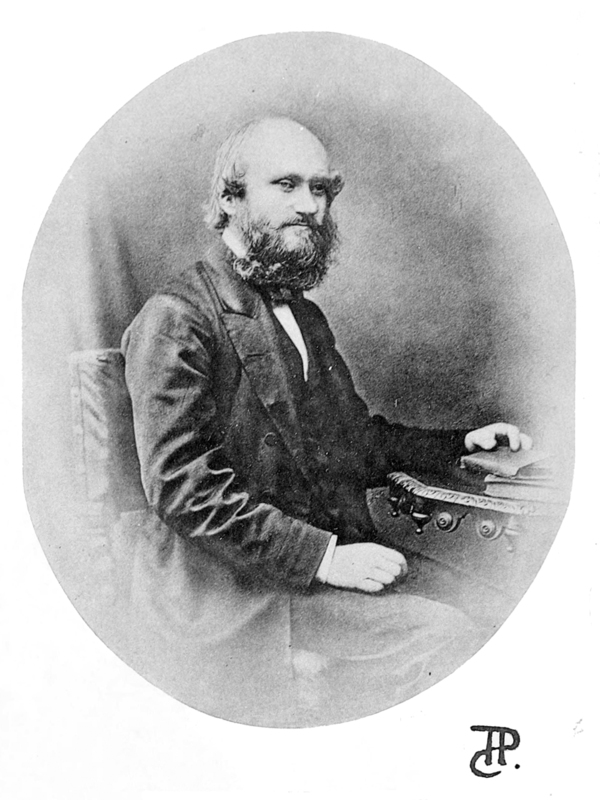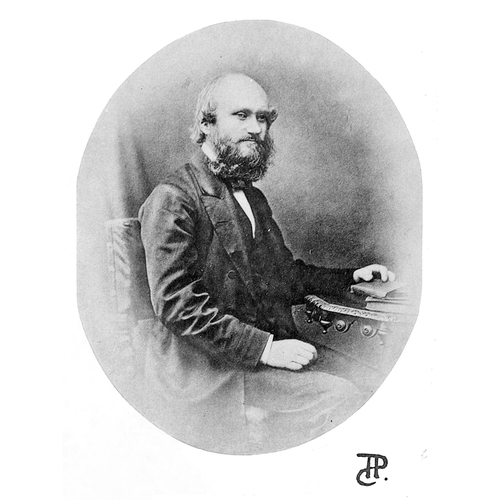
Source: Courtesy of Wikimedia Commons
CARPENTER, PHILIP PEARSALL, Presbyterian minister, conchologist, and social reformer; b. 4 Nov. 1819 in Bristol, Eng., youngest of six children of Lant Carpenter and Anna Penn; d. 24 May 1877 in Montreal, Que.
Philip Pearsall Carpenter attended Bristol College, 1833–36, and then Manchester College, York, 1837–40; that college became affiliated with the University of London and he received a ba degree in the same year, 1841. In that year also he was ordained a Presbyterian minister. His first ministry was at Stand (Lancashire), 1841–46, where on 1 Dec. 1841 he became an avowed teetotaller. The period 1841–50 was one of distress and discontent in the manufacturing areas, and there were riots and burning. Carpenter was much concerned with these social problems. In his ministry at Warrington (Lancashire), 1846–58, where his religious commitment became Unitarian in emphasis, he tried to alleviate unemployment and ill health from lack of sanitation; he started a day and night school for men, an industrial school for women, was secretary of a working men’s sanitary association, taught swimming to working people, and helped to establish an industrial school in 1847. In this latter school, printing was used as a means of encouraging literacy and teaching a trade to the unemployed. Subsequently a cooperative printing business, the Oberlin Press, was established, and it printed religious publications.
In his youth Carpenter had helped to arrange shells in the Bristol museum and he kept his interest in collecting. In 1855 he was helped by a relative to purchase a famous collection of west Mexican sea shells, made by Frederick Reigen. Carpenter reviewed over 100,000 shells in this collection, and gave two reports on it to the British Association for the Advancement of Science in 1856 as well as publishing at the Oberlin Press a 552-page Catalogue. From this collection, sets were given to the British Museum and sent abroad; one was accepted by the State Cabinet of Natural History in Albany (New York) on condition that Carpenter be its curator. Many scientific publications by Carpenter followed between 1855 and 1873, principally on living mollusks from British Columbia to Panama; he also participated in meetings of the British Association for the Advancement of Science.
Carpenter was given leave of absence at Warrington in 1858, and went to Albany. The visit to America was all the more welcome as his lack of sympathy with dogma and his belief in “the right of any member of the Church to search freely after the truth, and to hold and teach whatever appears to him to reveal the will of God” had set him apart in Warrington and were to lead to a final disassociation with the church there in 1862.
After arranging the Mazatlan shells at Albany, he went to arrange and catalogue the shell collection of the Smithsonian Institution, Washington, and when he returned to England the collection was sent to him so that he could continue. His strong views against slavery in the critical period before the Civil War made it necessary that he remain in the Smithsonian during his work in Washington. Carpenter travelled over 12,000 miles in America, meeting with temperance and anti-slavery groups. He attended many Roman Catholic services, with which he found himself in “religious sympathy” and whose music he greatly enjoyed. On three visits to Montreal he lectured on sanitary reform and at McGill University on his scientific work, becoming a friend of Sir John William Dawson* and Sir William Edmond Logan. He collected natural history specimens, and became a corresponding member of a number of scientific societies in the United States and England. In 1860 he received a phd degree from the University of the State of New York, the first such degree granted by that body.
Carpenter returned to Warrington in 1860, and ministered there for another year and a half. On 1 Oct. 1860 he married Minna Meyer, formerly of Hamburg, Germany, a friend of long standing; they adopted a young American orphan boy whom Carpenter had befriended in the Smithsonian Institution. He continued his arranging of shells and writing of scientific articles.
The Carpenters left for Montreal on 26 Oct. 1865. Believing that McGill University was the best place in British North America for natural history, he had given his large shell collection to McGill University, to be called the Carpenter Collection. In Montreal he continued to look after it and he gave lectures at various times, but he did not have a formal position at McGill. He opened West-End Select School for boys, often from Montreal’s best families, in 1866. His preoccupation with social welfare continued, and he was involved in several citizens’ committees endeavouring to combat the high death rate in Montreal and the unsanitary conditions which made attacks of pestilence a danger. Among his associates were William Hales Hingston*, Alexander Vidal, William Bennett Bond*, and William Workman. He was an indefatigable worker, lecturing and publishing pamphlets on temperance and on vaccination, and he continued his scientific work and writing, particularly a monograph on Chitons. Poor health gradually sapped his energy, and he died of typhoid fever.
Carpenter was a natural and persistent lecturer, with a sincere love of humanity, who strove in his ministry to follow the teachings of Jesus Christ. Prohibitionist, abolitionist, vegetarian, a supporter of reform in the living conditions of the poor and illiterate, he was respected and loved by all, whether they agreed with his doctrines or not. His chief personal delights were music and the collecting of shells, and from the latter enthusiasm he made himself an outstanding authority among the conchologists of his day by his careful and persevering habits of analysis and comparison.
[P. P. Carpenter wrote two reports for the British Association for the Advancement of Science on west coast Mollusca. The second, “Supplementary report on the present state of our knowledge with regard to the Mollusca of the west coast of North America,” Report of the British Association for the Advancement of Science for 1863 (London, 1864), 517–686, is still one of the best compendiums in molluscan literature, particularly in reference to the west coast, from Linnaeus to Carpenter’s day. It has a wealth of data and concise evaluation. Carpenter’s principal works are: Catalogue of the collection of Mazatlan shells in the British Museum: collected by Frederick Reigen, described by P. P. Carpenter, ed. J. E. Gray (London, 1857); “Description of (supposed) new species and varieties of shells, from the Californian and west Mexican coasts, principally in the collection of Hugh Cuming,” Zoological Society of London, Proceedings, XXIII (1855), 228–35; Memoirs of the life and work of Philip Pearsall Carpenter . . . chiefly derived from his letters, ed. R. L. Carpenter (1st ed., London, 1879; 2nd ed., 1880); The mollusks of western North America . . . embracing the second report made to the British Association on this subject with other papers . . . (Smithsonian Miscellaneous Collections, X, Washington, 1873). k.v.w.p.]
K. E. H. Palmer, Type specimens of marine Mollusca described by P. P. Carpenter from the west coast (San Diego to British Columbia) (Geological Society of America, Memoir 76, [New York], 1958).
Cite This Article
Katherine V. W. Palmer, “CARPENTER, PHILIP PEARSALL,” in Dictionary of Canadian Biography, vol. 10, University of Toronto/Université Laval, 2003–, accessed January 23, 2025, https://www.biographi.ca/en/bio/carpenter_philip_pearsall_10E.html.
The citation above shows the format for footnotes and endnotes according to the Chicago manual of style (16th edition). Information to be used in other citation formats:
| Permalink: | https://www.biographi.ca/en/bio/carpenter_philip_pearsall_10E.html |
| Author of Article: | Katherine V. W. Palmer |
| Title of Article: | CARPENTER, PHILIP PEARSALL |
| Publication Name: | Dictionary of Canadian Biography, vol. 10 |
| Publisher: | University of Toronto/Université Laval |
| Year of revision: | 1972 |
| Access Date: | January 23, 2025 |



